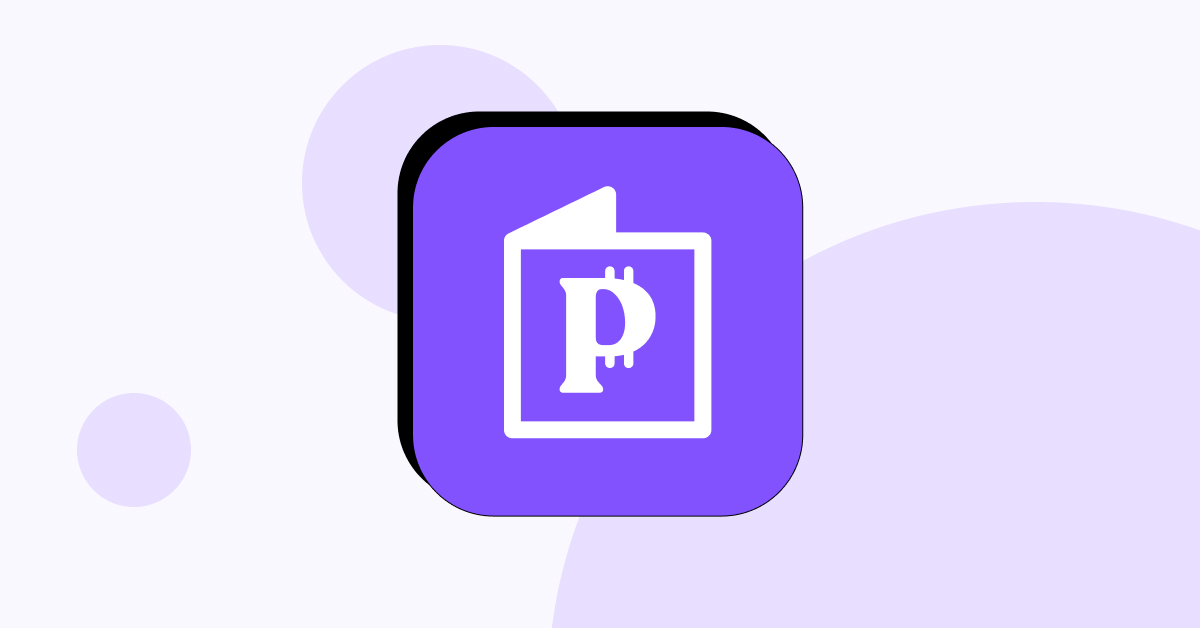One of the easiest ways to monetize your blog, e-commerce website, or YouTube channel is with ad placements. Each time a visitor clicks on or, in some cases, sees an ad, you get a cut. There is no better tool for this purpose than Google Adsense.
Without the need to look for advertisers and implement software solutions, you can display third-party AdSense ads. Its vast network of advertisers, customization options, and decent pay are major reasons why it’s so popular. But how exactly do you make money with Google ads?
What Is Google AdSense?
Google AdSense is an advertising program available to website publishers and YouTube Channel owners. It lets you earn money by displaying third-party programmatic ad placements in the form of images, texts, interactive media, or videos. Google AdSense pays either on a per-click or per-impression basis.
- A per-click basis means you get paid every time a visitor clicks on your ad placement.
- The per-impression method records all digital views, called ad impressions, and pays you for displaying ads.
An auction system is used on Google AdSense to place the ads on your website. Advertisers can bid for the ad space on your website, and the highest bidder will win the space. Unlike a traditional auction, the bidding on Google AdSense isn’t done in advance. Instead, it happens every time a visitor enters.
Advertisers can choose preferences for the demographics they want to target. The fewer restrictions you choose for your ads, the more ad placements your website is likely to get. There is a risk that Adsense ads will be irrelevant to your visitors or even harm the website’s reputation.
This is where most of the knowledge on how to make money with a Google AdSense account lies. First, you’ll need to apply to the Google AdSense program and get your account approved.
How to Apply for Google AdSense?
Google AdSense matches ads to your site according to its visitors and content as much as possible. For example, if your audience loves sports, you will likely get football- or basketball-related ad placements on your website. You have some control over the ads on your website within your Google AdSense account.
Creating and Activating Google AdSense Account
- Create a Google account if you haven’t already done so. Usually, it’s most convenient to create a Gmail account.
- Visit the Google AdSense page and click on Sign up.
- Set up your account by adding your website URL, payment information and choosing your country.
- Submit your website for approval to Google AdSense. This can be done in the Sites tab by clicking on +New site. There, you will also be able to view the approval progress.
- You will need to verify the site’s ownership to link it to Google AdSense. It can be done by adding an AdSense code snippet, Ads.txt snippet, or Meta tag.
- Additionally, you can preview how Google ads will look on your website by clicking on the Ads card and then Explore.
Google will review your payment details to ensure they are correct. After that, it will audit your site to verify compliance with the AdSense program policies. When your account is fully active, you’ll receive an email. This process takes several days, but in some cases, you might wait up to four weeks.
Google AdSense Eligibility Requirements
Eligibility requirements for Google AdSense come in two types. The most basic ones ensure that your website is technically up to standard and you can receive payment from Google ads.
- You must have full ownership of the website. It’s expressed by access to the HTML source code.
- Unique content that attracts visitors, although there is no minimum traffic requirement.
- You must be over 18 years old.
Other rules related to Google AdSense program policies can be found on their website. They are subject to change, but the main idea is that your content won’t trick visitors or advertisers. Here are some of the main Google AdSense policies you must comply with.
- Avoid deceptive site navigation and inappropriate ad placement, such as in pop-ups.
- You can’t make changes to ad code that will artificially inflate performance.
- The website must be free from malware, phishing, or other harmful practices.
- You may not click on your own ads or generate ad impressions. Such clicks and impressions are considered invalid.
- You may not encourage ad clicks or views with any kind of reward.
How to Start Earning Money with Google AdSense
You can start earning money with Google AdSense after your account has been approved. The first step is to set up ads on your site using Auto ads or manually selecting and placing ad units.
- Auto ads are the easiest way for publishers to start earning with Google AdSense. Google will determine the ads to display and the pages to use automatically. All the specifics, including optimization for different devices, will be handled so you can focus on content creation.
- Ad units give you complete control over ad placement on your website. You can determine the ad types, sizes, and positions. It also gives you the option to use some advanced ad formats, but everything still needs to comply with AdSense policies.
AdSense will set up an auction to determine the highest bidder for ads on your pages. Often, auto ads are a more profitable option since Google has more freedom with ad placements. A drawback is that it might have a negative impact on how your website is perceived by visitors. That’s why many website owners choose one or two types of ad units.
Types of Google AdSense Ads
Besides various options for ad placement, you can also choose the type of ads, called ad units, you want displayed. You can manage and customize ad units to have control over what’s displayed. The technical side of displaying ads in your website’s layout is handled automatically.
Display Ads
These are typical banner ads that can be found on most websites and fit almost all screen sizes. They are found in square, horizontal, or vertical formats and can automatically adjust the size. While easy to implement into the website, they aren’t the most effective for generating clicks and impressions.
In-feed Ads
These ads are also called native, as they blend seamlessly into the website’s content. Usually, it’s within the website’s content feed – a list of articles, products, or other options. They are better performing on mobile devices where space is minimal.
In-article Ads
In-article ads take a slightly different approach than in-feed ones. Instead of interpreting various choices, they are integrated between paragraphs in your article. Often, this is done strategically in places where the reader would be the most inclined to press on them.
Multiplex Ads
Some ads can be composed of multiple smaller, different ones. They are called multiplex ads. Usually grid-based and vertical or horizontal, such ads are best performing at the end of pages, articles, or other content. Multiplex ads as the main element of the page might overcrowd it.
Search Ads
With search engine ads, visitors can search the web with an integrated Google search engine where ads are also displayed. It helps to retain readers on your website and shows them ads matching what they search for.
Google AdSense for YouTube
Google AdSense is a mandatory requirement for acceptance into the YouTube Partner Program. Technically, creators aren’t making money from Google AdSense, but it’s essential for making money on YouTube. Without Google AdSense, no payments from YouTube ads, memberships, premium subscriptions, and other monetization mechanisms could be made.
It’s one of the reasons why many successful YouTubers have monetized not only their channels but their websites with Google ads. Earning from ad placements on a website is even easier as the YouTube Partner Program is more difficult to get into.
For example, you’ll need at least 1000 subscribers to be fully eligible, while you can start displaying ads on a website without any traffic requirements. Whichever your strategy might be, linking your Google AdSense and YouTube accounts is worth it, but it’s far from the only monetization strategy.
Optimizing Your Earnings with Google AdSense
High-quality Content
Maximizing earnings on Google AdSense is all about ensuring high competition for your ad units. The most crucial step here is creating an attractive website for your target audience. The website must not only be functionally convenient but also have content that ranks in searches and is shared around the web.
It’s easier said than done, but the key is to create content you yourself would appreciate. Find a topic or field you are passionate about and sell it to the right audience. Often, it’s helpful to cooperate with other content creators in your niche, figure out what’s working for them, and try to improve on their formula.
Repeat Visitors
Visitors are unlikely to click ads after visiting your site only once. If they frequently view and browse your content, they are more likely to be curious and click on relevant Google ads. That’s why one of the ways to increase your AdSense earnings is by aiming for repeat visitors. Many of the tips here are common for all good-quality websites.
- Identify and fix broken links regularly.
- Ensure your content is mobile-friendly.
- Improve the load speed.
- Use the right colors and fonts.
- Create a responsive menu.
- Avoid heavy graphics.
- Optimize the length of your content.
Ad Experiments
AdSense allows you to place two search boxes and three ads on each site page. If you maximize each of these, readers may find your site unattractive and leave. Too many Google ads also affect concentration, causing your audience to lose interest in your content.
If you want to increase your AdSense earnings, prioritize placement. Put the ads above the fold for higher visibility and a better click-through rate. You can also display them on the sidebar, footer, or top left side. It will take some time to learn how to make money with Google AdSense, but it’s crucial to keep experimenting.
A related tip is to connect your Google Analytics and your Google AdSense accounts. Analytics is great for data on visitor behavior on your website and seeing how they react to changes, including ad placements. Accounts can be linked in the Analytics admin dashboard by selecting Google AdSense links under the Product links tab.
SEO
Search engine optimization (SEO) will affect your AdSense earnings, too. It’s a set of practices for improving the quantity and quality of website traffic from search engines. Even if your content is top-notch, when nobody can find it, nobody will read it.
If your pages rank highly, you get more ad impressions and clicks. Optimize your content and site structure, use keywords relevant to your niche, and avoid stuffing them. Look for search queries that are less competitive, usually based on long-tail keywords.
These are just some of the basic ideas. If you don’t feel knowledgeable enough in SEO, it might be a good idea to hire a specialist.
Target High-CPC Keywords
One of the reasons why some niches are more profitable than others is that they have more high-CPC keywords. These are keywords that will earn you the most when displaying ads, usually because advertisers are interested in websites that target them.
There are various tools that can help you find such keywords – from paid ones by Semrush and Ahrefs to Google’s own Keyword Planner. You might also find some ad categories that are unprofitable. Be sure to block them in your Google AdSense account under Brand Safety settings.
Google AdSense Payments
No matter how well you optimize your website, you won’t receive more than 80% of the revenue the ads make. Google AdSense pays it using different payment methods. The methods you are paid on Google AdSense largely depend on your region and possible tax requirements.
To view the payment methods available, click on the Payments section and then choose Manage Payment Methods. There, you will find instructions for all payment forms available. Here are the two most common.
- Electronic Funds Transfer (EFT) deposits money directly into your bank account in your local currency. Not every location supports such payments.
- Wire transfers are usually faster, but they include more transfer fees, which might require currency conversion if your account isn’t in U.S. dollars or Euros.
To be eligible for any of the payment methods, you must satisfy the below conditions.
- Provide your tax information
- Confirm your personal information
- Select the form of payment.
- Reach the payment threshold of $100 (transfers to next month).
If you have reached or exceeded this amount during the course of the month, the payment will be initiated between the 21st and the 26th of the month. Keep in mind that some payments might be processed up to fifteen days after being initiated.
Google AdSense Pros and Cons
The Pros of Google AdSense
- Doesn’t cost anything.
- Lots of ad formats.
- The largest number of advertisers.
- No minimum traffic requirements.
- Easy to set up and customize even without much technical knowledge.
The Cons of Google AdSense
- You must reach the minimal withdrawal limit of $100 to get paid.
- It’s forbidden to use any other ad networks while using Google AdSense.
- Google charges a high 20% commission.
- Limited control over displaying ads on your website.
Conclusion
Learning how to make money with Google AdSense is crucial for every website owner. This article should have supplied you with the basics. It will take time and skill to find the most optimal earning strategies for your website, but if done well, displaying ads can be a significant income source.
FAQ
Is Google AdSense still profitable?
Yes, Google AdSense remains a lucrative way to make money in 2024. You can generate decent profits with a content-rich site that attracts a lot of traffic. Besides visitors, it’s important to abide by the various content policies of Google AdSense.
How much does AdSense pay per 1,000 clicks?
There is no fixed fee that’s applied for a set amount of clicks. Your earnings can range from $0.10 to $100 per 1,000 clicks or views. The value of ads highly depends on your niche and audience’s region. For example, a blog with 50,000 visitors from North America is likely to earn more if it’s about finance than travel.


